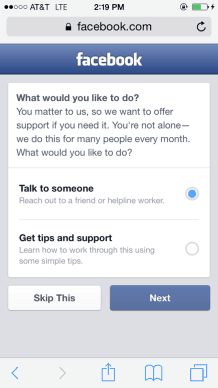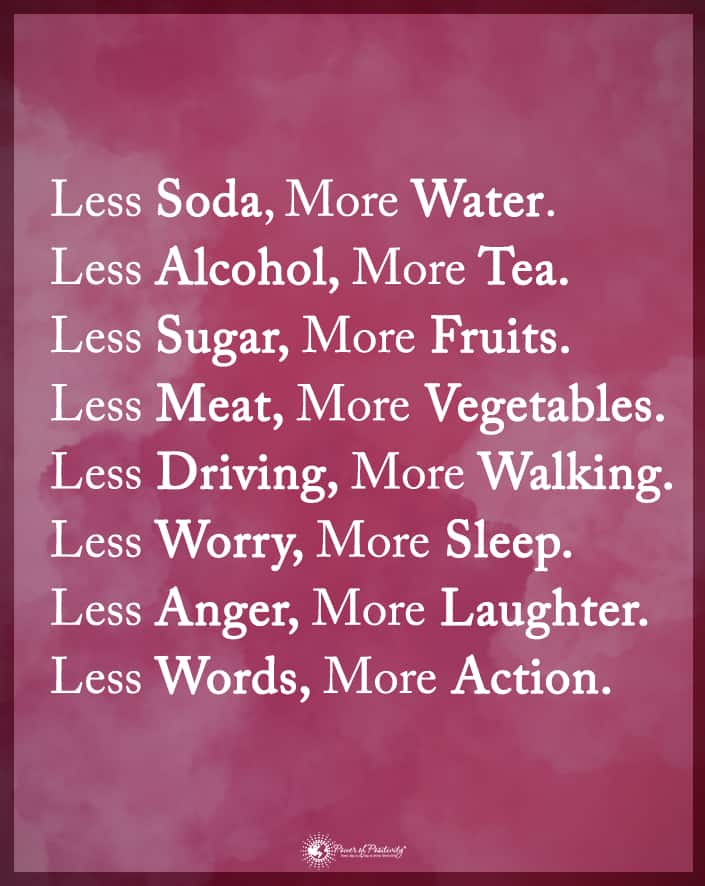Seeing troubled Facebook posts from a friend who is suffering from severe depression makes you want to reach through your screen and help them. And now you will be able to get your friend the help that they need. Facebook is making it easier to help those who are having emotional distress, but you have to do your part too.
In a review of social media and suicide prevention as a public health concern, researchers concluded that “Ultimately, proactively using social media to increase public awareness of and education on mental health issues is a logical modern public health approach that can potentially save lives.”
Here’s How Facebook Is Helping People With Severe Depression
Facebook has had a process in place for helping people who are going through depression and contemplating self-harm since 2011. However, they made improvements in 2015 to get help to those who need it quickly.
Previously, users who awe posts from severely depressed friends could upload screen shots and links to the Facebook suicide center through the help center. This is still an option via this link. You provide the full name of the person who is in distress, capture the link to their profile page, and upload a screenshot of the post that caused you to be concerned.
In the future, Facebook will make it easier to report these posts to get faster help to the person who is suffering from severe depression. You will be able to click to report a post to the Facebook safety team. They will have a team of people who will review the post and send a message to the person who posted the suicidal message.
The message from Facebook says “Hi ___, a friend thinks you might be going through something difficult and asked us to look at your recent post.” “What would you like to do? You matter to us, so we want to offer support if you need it. You’re not alone – we do this for many people every month.” The post also says “Only you can see this. Anything you do there will be kept private.” The user has an option to click ‘See Post’ or ‘Continue.’
Facebook will then provide a screen with options for the user. The screen will offer these options:
Talk to someone – Reach out to a friend or helpline worker.
Get tips and support – Learn how to work though this using some simple tips.
When the user clicks the button they will be connected to either a crisis support line or information for coping with an emotional crises. The user also has an option to skip the help that is offered.
Now Facebook is making it an easier process to help your friends.
How you can help
How to help:
- Click the drop down arrow in the upper right corner of the post.
- Click ‘I think it shouldn’t be on Facebook’
- Click ‘Something else’
- Click ‘This displays someone harming himself or planning to harm himself’ (Examples: Self-inflicted wound, weapon held to head, suicide note, promotes eating disorder)
The next screen provides a few options to the person who is reporting it.
If the person is in immediate danger of hurting themselves, report the incident to local emergency services right now. Do not wait.
- Offer help or support – Message ___ to let them know that you care.
- Reach out to a friend – It’s important for you to feel supported too. Message a friend about this.
- Chat with a trained helper – People at Lifeline are online right now and can chat with you confidentially about how to support __.
- Text a trained crisis counselor at Crisis Text Line –They can offer guidance on how to support _ at this moment. Just text TRUST to 741741.
- Call Lifeline – Talk with a trained helper for free at 800-273-8255. They can tell you how to support __.
- Ask us to look at the post – If you think we should know about this post, we’d like to take a look at it as soon as possible and offer support to __. Your name will be kept confidential.
Depressing statistics
Does social media help connect us to each other or does it perpetuate our tendency to be critical of others? Researchers found that “Victims of cyberbullying were almost 2 times as likely to attempt suicide than those who were not. These results also indicated that cyberbullying offenders were 1.5 times as likely to report having attempted suicide than children who were not offenders or victims of cyberbullying.”
Suicide prevention
Anytime someone talks about hurting themselves, you should be concerned for their safety and mental well-being. One of the best things you can do is to tell them that you care about them and that you don’t want them to hurt themselves.
If you believe that someone is in immediate danger, call 911. Police and EMTs are trained to handle these situations. You probably aren’t equipped to get your friend the help that they need, but the professionals are.
If you think someone might be going through a severe depression but is not in any danger of hurting themselves, you can read our article here to learn more about the signs of depression. You can also reach out to the National Suicide Prevention Lifeline at 800-273-TALK (8255).




 Final Thoughts on Learning How to Let Go of Worry
Final Thoughts on Learning How to Let Go of Worry









